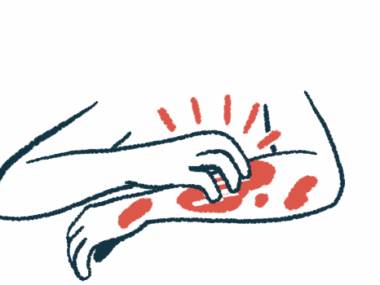FDA OKs pz-cel, now Zevaskyn, for adults, children with RDEB
Therapy is expected to be available in U.S. by third quarter of 2025
Written by |

The U.S. Food and Drug Administration (FDA) has approved the cell-based gene therapy prademagene zamikeracel, previously pz-cel or EB-101, for treating wounds in adults and children with recessive dystrophic epidermolysis bullosa (RDEB).
The therapy’s developer Abeona Therapeutics will market it under the brand name Zevaskyn. According to Abeona, Zevaskyn is the only FDA-approved product that can treat RDEB wounds with a single application.
“Today’s approval of Zevaskyn represents a pivotal moment in the treatment of RDEB, answering the call of people living with the clinical, economic, and human impact of this devastating disease,” Vish Seshadri, PhD, CEO of Abeona, said in a company press release.
Zevaskyn is expected to be commercially available in the U.S. by the third quarter of 2025, according to Abeona, which has set the list price for the one-time treatment at $3.1 million.
“We are committed to working closely with both commercial and government payers on outcome-based agreements that stand behind the promise of Zevaskyn for patients, and expedite access,” said Madhav Vasanthavada, PhD, Abeona’s chief commercial officer.
Abeona is offering a patient support program called Abeona Assist that will help patients access treatment and understand financial assistance options. Abeona encourages patients, families, and providers who want information about how to receive Zevaskyn to contact the support program by phone at 1-855-ABEONA-1 (1-855-223-6621) or by email at [email protected].
“We look forward to providing the RDEB community access to now-approved ZEVASKYN,” Seshadri said.
How does Zevaskyn work in RDEB?
RDEB is caused by mutations in the COL7A1 gene that carries instructions to make type VII collagen, which helps skin maintain its structure. A deficiency or dysfunction in this protein with RDEB results in fragile skin that’s prone to chronic wounds that don’t heal efficiently. With Zevaskyn, a patient’s skin cells are collected and modified to carry a healthy version of the COL7A1 gene. These cells are grown on a thin sheet that’s then grafted onto a patient’s wounds to promote more efficient healing.
“Grafting gene-corrected skin onto chronically open wounds of patients with recessive dystrophic epidermolysis bullosa promises the potential to provide long-term healing of wounds, reduction in pain, and reduced risk of infection,” said Amy Paller, MD, a pediatric dermatologist and clinical researcher. Paller said this type of cellular treatment strategy “will nicely complement recently approved topical products.”
FDA approval of Zevaskyn was based mainly on data from a Phase 3 clinical trial called VIITAL (NCT04227106) that enrolled 11 people with RDEB who had chronic wounds, 43 of which were treated with Zevaskyn and 43 were left untreated.
Most (81%) wounds treated with Zevaskyn healed by at least 50% at six months after treatment, but only 16% of the untreated wounds healed by that amount at the same timepoint.
Zevaskyn has also been tested in a Phase 1/2a clinical trial (NCT01263379), the results of which likewise indicated the therapy promoted wound healing. Across both studies, no treatment-related serious safety issues related to the therapy have been reported. The most common side effects of Zevaskyn are pain associated with grafting the cells and itching, according to its prescribing information.
“Zevaskyn was well tolerated and efficacious in clinical studies, providing clinically meaningful improvements in wound healing, pain reduction, and other associated symptoms in large chronic RDEB wounds after a single application. In the completed Phase 1/2a study of Zevaskyn, we have observed wound healing and pain reduction that have lasted for years after a single application,” said Jean Tang, MD, PhD, lead principal investigator of the VIITAL study. “Today we can celebrate the availability of an exciting new therapeutic option made possible by the incredible courage of patients and families who participated in these clinical studies.”
Good news for EB community
News of Zevaskyn’s approval was met with celebration by the epidermolysis bullosa community.
“Given that this therapeutic product addresses even the largest, most difficult, and problematic chronic wounds, we believe that the application of Zevaskyn can significantly increase the quality of life of patients,” said Brett Kopelan, executive director of the advocacy organization debra of America and the father of a teenager with RDEB. “Furthermore, I believe Zevaskyn has the potential to transform the day-to-day standard of care for patients who suffer with these large chronic non-healing wounds that cause significant pain and stress not only for the patient, but also for their caregivers.”
Anna Bruckner, MD, co-director of the EB Clinic at Children’s Hospital of Colorado, said Zevaskyn’s approval “marks a monumental step forward for individuals living with RDEB and their families, offering a much-needed, long-lasting treatment option for this devastating condition and providing hope for improved quality of life for these patients.”
Michael Hund, CEO of the research organization EB Research Partnership, called the approval “a landmark moment for the global EB community.”






